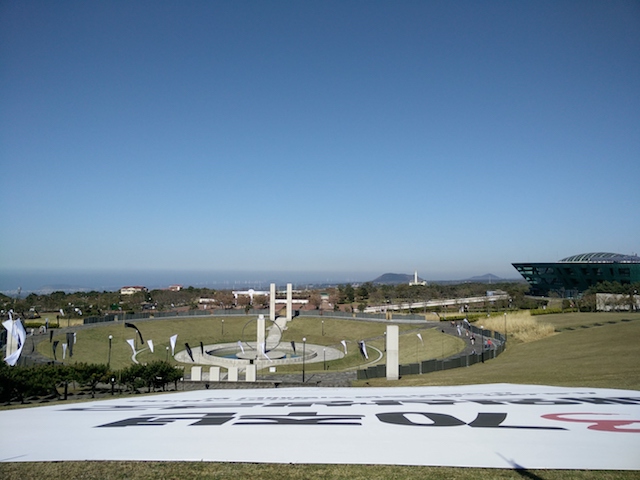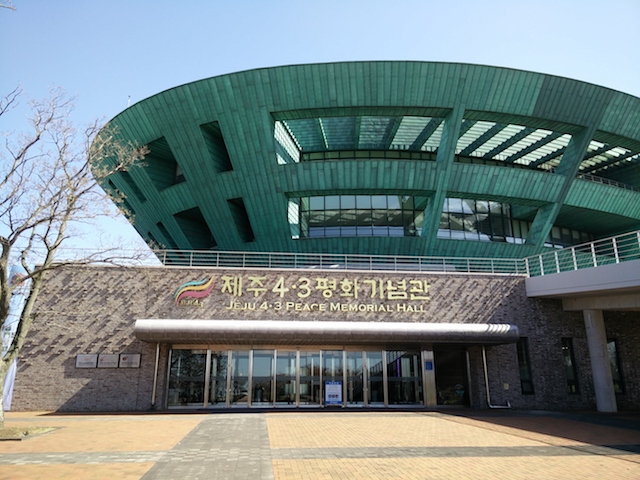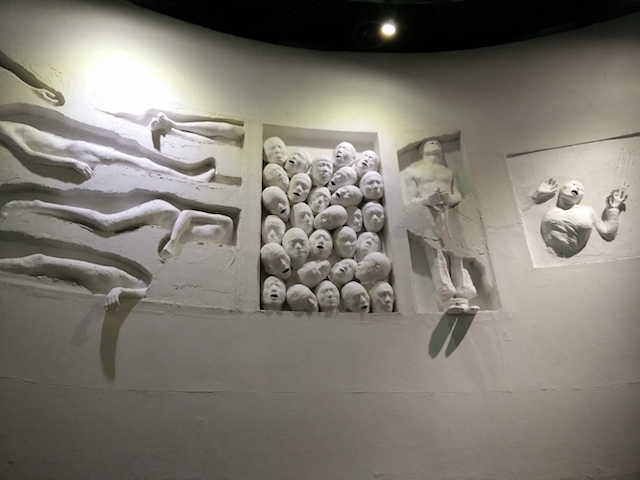During my last trip to Jeju island I had the opportunity to get to know more about the island history and culture and the unique characteristics of its inhabitants and landscape. Jeju island, known for its beautiful sea, traditional food and volcanic landscape, has been over the years one of the top destination for Korean honeymooners.
An island of immense beauty but also of dark and bloody history. Visiting the island can amaze you and at the same time shock you with the tales of violence that happened in the past. A trip to the island should include also experiencing and learning more about this history, to discover both sides the island: the natural beauty and the dark side of its history.
The landscape of the island is unique for the country and the volcanic origin of it has shaped its mountain and coasts. The volcanic characteristics and the landscape of the island can be admired at the Daepo Jusangjeolli Cliff (주상절리) where the stone hexagonal pillars shaped by the lava erupting from Hallasan volcano into the sea. This type of basalt coastline can be found in few other places on the planet, like Giant Causeway in Northern Ireland or Svartifoss Waterfall in Iceland.

Another representative landmark of Jeju is Seongsan peak (성산일출봉), originated by an underwater eruption. It has become a must go destination to visit when on the island: many tourist enjoy the relatively easy hike to the top where you can have nice view of the port and nearby Udo island.

One aspect that can be found in the island is the sense of “resistance” and toughness in the island that can be noticed in the attitude of the inhabitants, for instance the Haenyo (female divers) that work for up to 6 hours in the sea to catch fish and seafood, or to the rough landscape of the island and its coast, shaped by lava.
Haenyo (해녀) are the female divers of Jeju island. For centuries the female divers had a key role in the economy of the island by harvesting shells fish and seaweed. Known for their fierce character and strength, they have been inscribed on the representative list of the Intangible Cultural Heritage of Humanity in 2016.
A visit to the Haenyeo museum is a great opportunity to discover more about the life of these divers thanks to the photo and video exhibition about their activities and collection of items related to their daily life.
Jeju has an history of resistance of the island that from recent years – like the protests organised against the installation of a military naval base in the southern part of the island few years ago – can be traced back to the 13th centuries when the Jeju islanders fought against the Koryo – Mongols and in the beginning of 20th centuries against Japan invasion of the peninsula.
One of the most bloody periods of modern Korean history culminated in the events of the of 3rd of April 1948. The end of Japanese occupation in 1945 left a power vacuum on the island that saw the rise of leftists groups that were opposing the government of the peninsula and US authority. Tension continued to rise, and the violent crackdown of protests on the island by police and Northwest Youth Association transformed the island in a prison and killing field with indiscriminate execution of activists and civilians, wiping out whole villages, that became known as “lost villages”. Around 14.000 to 30.ooo people were killed during the uprising.
This year, in the occasion of the 70th anniversary of the Jeju uprising, I visited the 4.3 Museum and the Peace park. The museum is a memorial for the victims and contains photos and video recordings about the uprising and art pieces dedicated to the tragic events. The outside garden contains a wide open space were ceremonies were held to commemorate the victims, and an altar where the name of the victims are engraved. The museum and Peace Park were built as a reminder for the future generations of the violence that were perpetrated by government and symbol of reconciliation and hope for a peaceful future.



A visit to Jeju island should include, together with visiting the natural beauties of the island and trying the delicious food the island has to offer, also these other cultural experiences, that can provide an insight in the Jeju and Korean peninsula modern history and their journey towards democratisation.

